Northern cardinals are easily recognizable, bright red birds native to parts of the United States and Mexico. They are also commonly referred to as redbirds, red cardinals, common cardinals, or simply, cardinals.
Only males of this species possess the characteristic bright red color. Females are a more dull olive or brown colored, which helps them avoid notice while incubating eggs. Read on to learn about the northern cardinal.
Description of the Northern Cardinal
Cardinals are small to medium sized songbirds, with a maximum wingspan of approximately 12.2 inches. This species does display sexual dimorphism, which means that males and females can be easily distinguished from one another. Males are slightly larger, and much more brightly colored, than females.
It is not uncommon for males of the species to be much flashier than females, as is seen to the extreme in birds of paradise. In cardinals, female are olive or brown colored rather than bright red. Both sexes have triangular shaped beaks, and crests that can be lifted or laid flat.
Interesting Facts About the Northern Cardinal
These beautiful little birds are relatively widespread, common, and easily recognizable. Though the average citizen can recognize a cardinal, the vast majority does not know much else about them. Learn more about cardinals below.
- Pigmentation – Like many other bird species, including flamingos, cardinals get their bright coloration from their diet. Many of the berries and seeds that these birds consume contain carotenoid pigments. These pigments are converted to the red coloration you see in adult male birds.
- Atypical Coloration – Not all male cardinals have the bright red coloration that they are famous for. A very small percentage of the population has a unique genetic variation known as xanthochroism. Birds with this genetic defect are missing an enzyme that converts yellow pigments into red color, which makes the birds a bright yellow!
- Monogamy – Pairs of cardinals will often mate for life. Once a pair has established, they will often continue to mate with the same bird until one of the pair dies. There are occasions, however, when the pair fails to reproduce successfully and will seek other mates.
- Dedicated Parents – Despite their cute appearance, these are fierce little birds. Males dutifully care for the female while she incubates the eggs, and both parents will viciously defend their nest and territory from intruders. Some have even been known to attack their own reflection in an attempt to drive away the “other bird.”
Habitat of the Northern Cardinal
These birds inhabit a wide variety of habitats across their range. In most areas they require trees to successfully nest and forage, as well as bushes and shrubs to search for berries. They are commonly found in wetlands, woodlands, shrublands, gardens, and parks.
Bird-friendly landscaping has allowed this species to thrive in urban areas as well as undisturbed forests. In many places they can successfully sustain themselves with the help of backyard bird feeders in areas they would not have otherwise thrived.
Distribution of the Northern Cardinal
This species is found in the mid to eastern United States, as well as eastern Mexico. They can also be found in parts of southern Canada. In the United States they are found as far north as Maine, and as far west as Texas. In Central America they range along the eastern coast as far south as northern Belize. This species has also been introduced in Hawaii, southern California, and Bermuda.
Diet of the Northern Cardinal
Cardinals are granivorous, which means that the vast majority of their diet consists of seeds, grains, and berries. In fact, 90% of their food intake is sourced from weed seeds, fruits, grains, and berries. Foraging usually consists of hopping along the ground and under bushes searching for dropped seeds and berries.
When they are given the opportunity, they will feed on a wide variety of insects as well, but it does not make up a significant portion of their diet. Growing chicks are, however, fed exclusively on insects.
Northern Cardinal and Human Interaction
Bird feeders are a strong attractant for these birds, and they are quite common in urban areas because of this. The best way to attract this species is by providing sunflower and safflower seeds in your bird feeder.
Before the introduction of the Migratory Bird Treaty Act in 1918 this species was also a popular pet for both its color and song. They are threatened by habitat destruction, but the planting of bird-friendly foliage in parks and gardens as well as provision of bird feeders helps keep their population stable.
Domestication
This species has not been domesticated in any way.
Does the Northern Cardinal Make a Good Pet
It is highly illegal to own, kill, or harm this species. They and the vast majority of avian species are protected under the Migratory Bird Treaty Act.
Northern Cardinal Care
In a zoological setting, these birds are relatively easy to care for. They should be provided with plenty of flight space, but do not require extensive enclosures as they are relatively small.
Their diet is easy to replicate, particularly because commercially produced songbird foods are very common. They should also be provided with a variety of branches and perches, and novel feeding stations.
Behavior of the Northern Cardinal
Cardinals are highly territorial, and will defend their territory and nests from other birds, predators, and anything that wanders into their space. Males sing to announce and define their territories, usually from the tops of tall trees.
They will chase any rival males that enter their territories to protect their food sources, and often mistake their reflection for rival males as well. It is not uncommon to see a mated pair flying or foraging together.
Reproduction of the Northern Cardinal
Females build the nest, while the male collects and provides much of the building material. She will lay 3 – 4 whitish eggs, and incubate them for 12 – 13 days. Males will sometimes incubate for short periods, but normally the female incubates and the male brings her food.
It takes just 10 – 11 days for the chicks to begin fledging, and they are independent soon after. Pairs can produce three or four clutches of offspring in a single year.
Beliefs, Superstitions, and Phobias About the Northern Cardinal
Religion actually played a part in the naming of this bright-colored bird. European settlers saw the bright red plumage, and were reminded of the red vestments worn by Catholic cardinals. The crest of this species is also reminiscent of the pointed headgear of some higher Catholic officials.

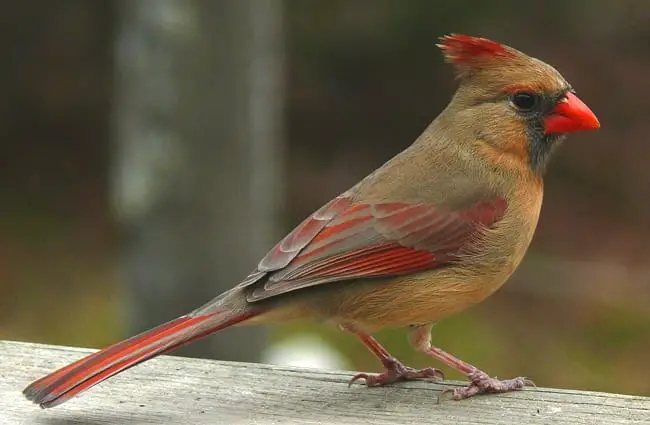
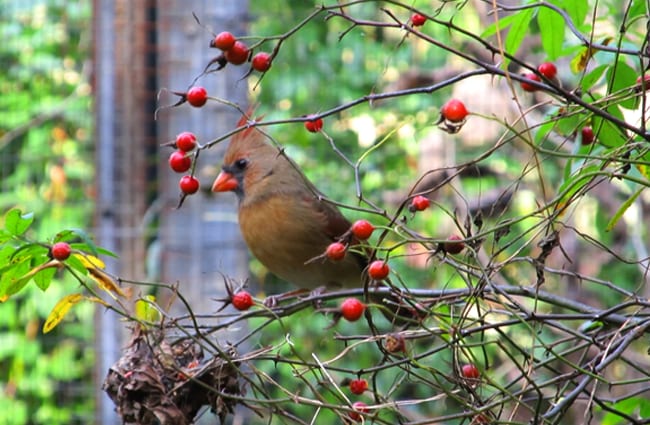
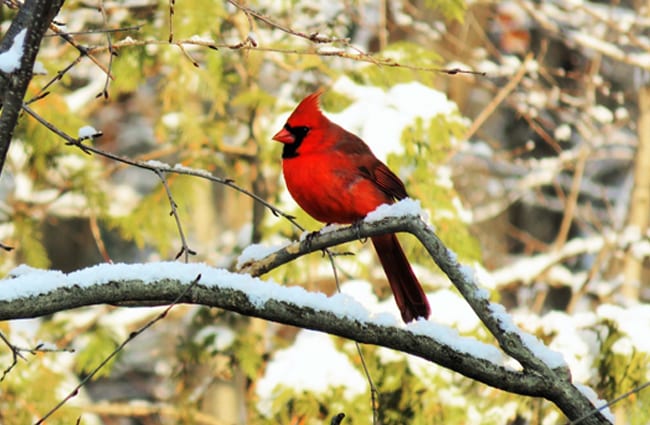
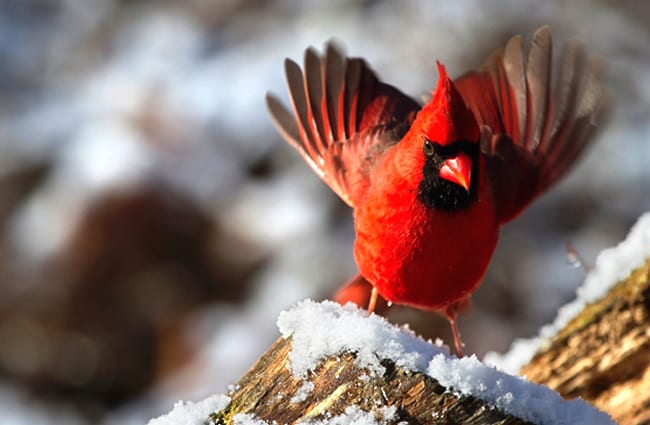
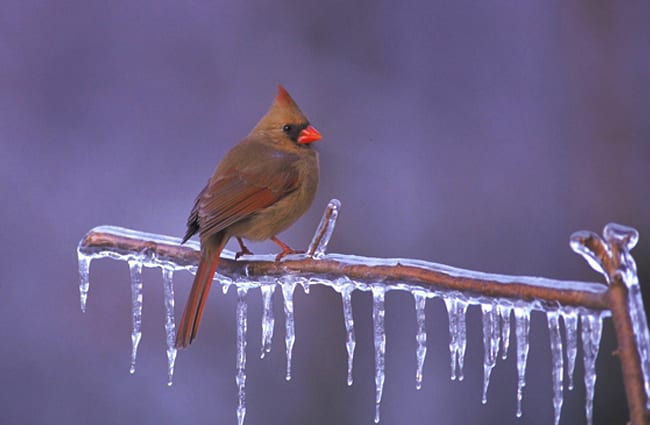
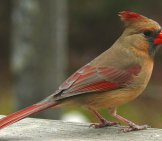
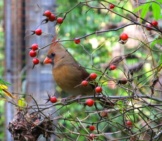
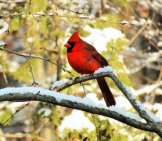

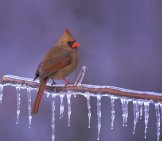
![Red Angus Closeup of a beautiful Red Angus cowPhoto by: U.S. Department of Agriculture [pubic domain]https://creativecommons.org/licenses/by/2.0/](https://animals.net/wp-content/uploads/2020/03/Red-Angus-4-238x178.jpg)




![Red Angus Closeup of a beautiful Red Angus cowPhoto by: U.S. Department of Agriculture [pubic domain]https://creativecommons.org/licenses/by/2.0/](https://animals.net/wp-content/uploads/2020/03/Red-Angus-4-100x75.jpg)

